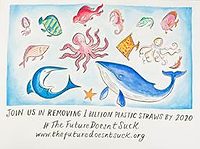Beverage producers must assess plant’s capability, capacity
Product mix, filling speeds alter operations plans Keywords: beverage operations, filling machines, SKU proliferation, product evaluation, flexibility

Beverage producers in all categories traditionally are challenged to increase production, improve productivity and raise line efficiency in an economical and quality manner. However, the obstacles seem to get more difficult and voluminous as the industry continues its dynamic trends.
The real time question is: How well are producers able to cope with these obstacles with timely action and favorable results? Although many approaches are used, the bottom line must consider what your facility is capable of producing and at what levels of capacity.
What is generally the situation, marketing plans and forecasts determine what products and packages are required for specific market areas — followed up by volume demands that might include promotions, introductions and sell outs. These marketing orders are the drivers that will test the infrastructure of any producing facility.
From an operations perspective, capability can become the No. 1 challenge dictated by product characteristics and package make-up configurations.
If products require specific processing treatment, the producer must be in a position to adequately and properly run those requirements. For example, most carbonated soft drink liquids are “cold filled” and temperature is controlled by a refrigeration system. However, with the advent of juices and other liquids, they might require “warm fill” with the use of heat-exchanging equipment to essentially pasteurize the product. These are only a few of the issues that present producers with capability decisions on what products they can or cannot run.
The same is true for the packaging of the product. Will existing machinery and equipment handle the container, closure and packaging material for the product? Again, with additional SKUs continually entering the marketing menu of available packaged product for the consumer, the issue of capability looms high on the priority list before realistic commitments can be solidified.
From an engineering viewpoint, evaluation and functionality of the machinery and equipment at the prime producing location must be an initial and critical step. Marketing teams might want to add a specific packaged product to a portfolio, but can the producer manufacturer it?
Solutions to this challenge can be facilitated by using a contract packer or having a “sister” plant run the package in question. When prime locations lack capability, the alternatives must be economically sound and operationally practical.
The capability issue will continue to accelerate because the type of beverages added to the menu have a wide variety of characteristics that will impact processing machinery and equipment — to the extent that new technology might have to be designed and manufactured.
For entrepreneurs wishing to enter the beverage market, an excellent example is the craft beer explosion where originally designed mini-brewery machinery and equipment had to be enhanced, modified or altered in some way to accommodate processing new flavored type brews. Now capacity can blossom into unforeseen capital expenditures and ongoing maintenance costs.
As a related obstacle, capacity has been handled on packaging line machinery and equipment by running more shifts, more hours or working overtime. Most producers, regardless of the beverage category, have utilized one or all alternatives to obtain needed capacity.
From an operations perspective, the factors of hours, shifts and overtime can reach a limit. If those approaches do not provide the capacity required, alternatives might involve contract packaging, other outsourcing, or buying higher speed machinery and equipment.
However, another factor is aligned with capacity that relates to the characteristics of certain beverages. Although machinery and equipment might have the capacity to run at desired high speeds, those characteristics will not permit the product (or container) to run at those speeds at any time. Such an operating condition could curtail maximum capacity, asset utilization and economical production costs.
From an engineering viewpoint, machine operating speeds have their limits, regardless of designed capacity ratings. For example, beverage fillers can only rotate so fast before containers would be forced off the filler. The laws of physics note this fact regardless of how many valves or the size of the filler. Therefore, beverage line maximum capacity can be realized, but is a function of containers, products and the equipment itself.
When given a set of conditions involving these variables for specific products/packages, the true capacity will always be different. Calculating capacity of an operating facility will depend on the volumes of the package mix. It should be understood that capacity and line efficiency can and will impact standard cost in any costing system.
The capability and capacity issues facing beverage producers continues to be a significant challenge because the SKU explosion is forever. The prudent producer manages capability and capacity change as required by variable operating conditions driven by marketing and consumer demands. BI
Looking for a reprint of this article?
From high-res PDFs to custom plaques, order your copy today!








